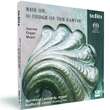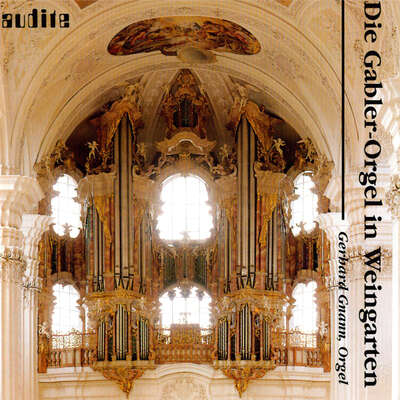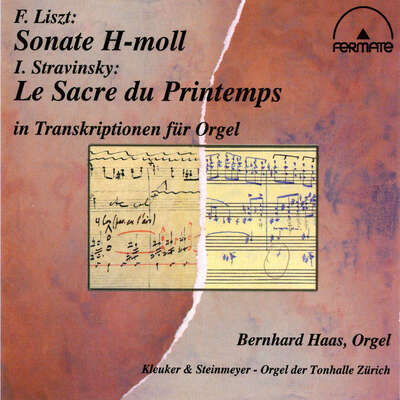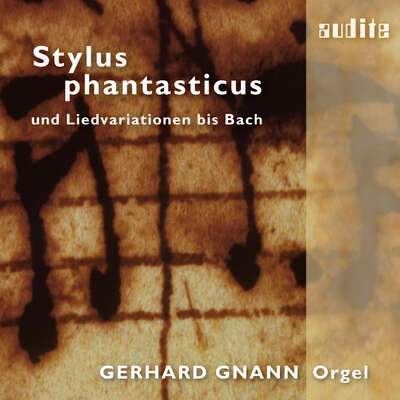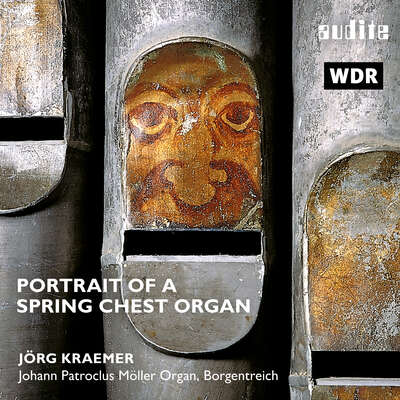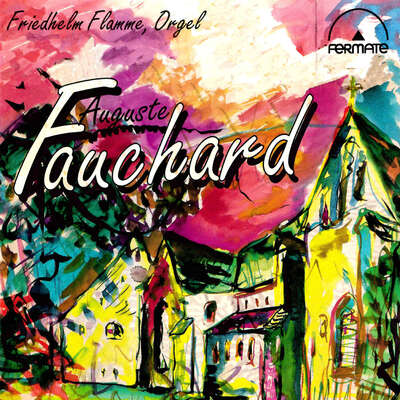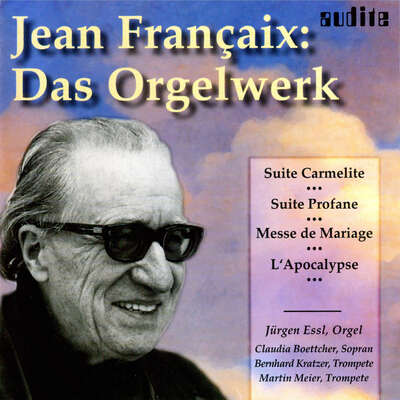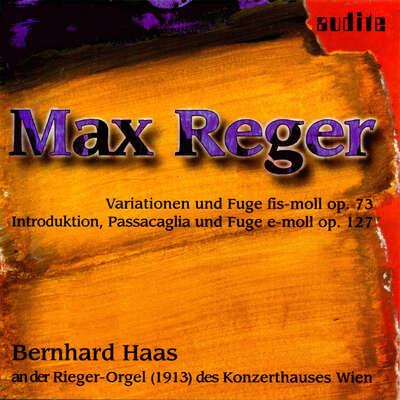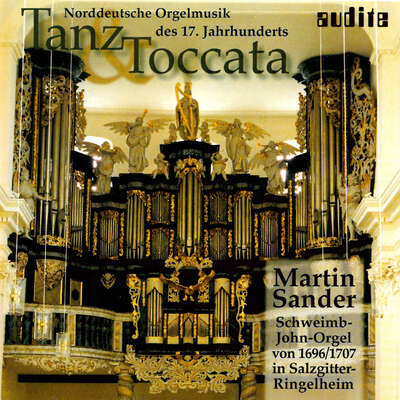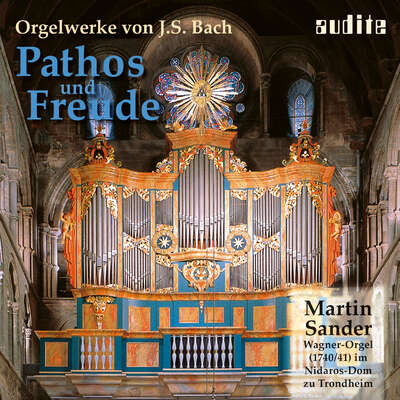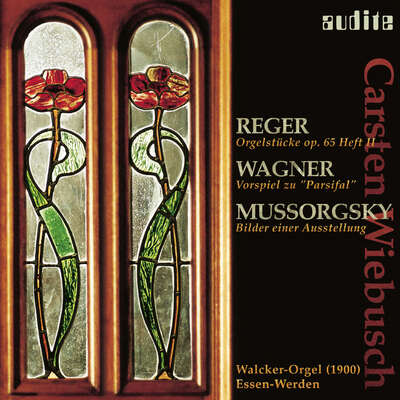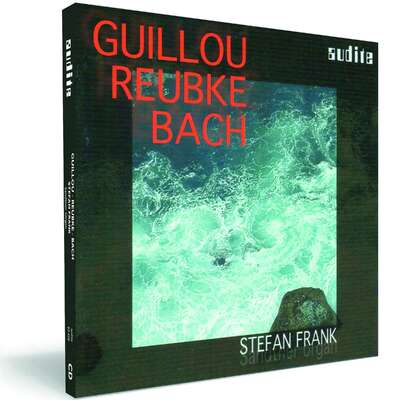
Es gibt wohl kein Instrument, das sich besser für eine Surround-Aufnahme eignen würde als die Orgel. Geradezu prädestiniert erweist sich dank ihrer charakterlichen Differenzierung und räumlichen Trennung in drei Teilwerke die große Klais/Mayer-Orgel der Saarbrücker Basilika St. Johann. Die...mehr
"Bei romantischen und gemäßigt modernen Noten bringt Leonardy die Orgelpfeifen energisch, temporeich und in plastischer Farbenpracht zum Klingen." (Süddeutsche Zeitung) "Diese Produktion ist klanglich wie musikalisch bestens durchdacht und in jeder Hinsicht auf höchstem Niveau. Und ihr Leben, ihren Atem, erhält die Musik durch das hervorragend aufeinander eingespielte Team, den Organisten Bernhard Leonardy und seine ‘Königin’, die Orgel der Basilika St. Johann." (klassik.com)
Details
| Rise up, o Judge of the Earth - Sacred Organ Music | |
| Artikelnummer: | 92.564 |
|---|---|
| EAN-Code: | 4022143925640 |
| Preisgruppe: | ACX |
| Veröffentlichungsdatum: | 1. August 2006 |
| Spielzeit: | 70 min. |
Zusatzmaterial
Informationen
Es gibt wohl kein Instrument, das sich besser für eine Surround-Aufnahme eignen würde als die Orgel. Geradezu prädestiniert erweist sich dank ihrer charakterlichen Differenzierung und räumlichen Trennung in drei Teilwerke die große Klais/Mayer-Orgel der Saarbrücker Basilika St. Johann. Die italienisch disponierte Hauptorgel auf der rückwärtigen Empore, das große französische Récit (Schwellwerk) und ein prunkvolles Chamadenwerk mit drei „spanischen Trompeten“ füllen den Kirchenraum klanglich aus und sorgen im Zusammenspiel für ein überwältigendes Raumerlebnis für den Kirchenbesucher – und den Hörer von „Rise up, o Judge of the Earth - Sacred Organ Music“.
Musik und Liturgie bilden im christlichen Glauben stets eine wichtige Einheit, und seit der Gotik ist die Orgel als Symbol für liturgische Musik mit der Gestaltung liturgischer Feiern verbunden. Die Faszination, die von ihrem majestätisch-gravitätischen, opulenten Klang ausging, ist bis heute ungebrochen. Diese oftmals auch optisch beeindruckenden Instrumente, die so stark an ihre kirchliche Umgebung gebunden sind, umfassen das gesamte Spektrum des menschlichen Hörbereichs – und die Musik verfehlt selten ihre Wirkung.
Bernhard Leonardy präsentiert auf der vorliegenden SACD – die in Zusammenarbeit mit dem Saarländischen Rundfunk entstand – Werke von der französischen Romantik bis zur zeitgenössischen Orgelmusik. Ob die Orgelsonate zum 94sten Psalm des kongenialen Liszt-Schülers Julius Reubke (1834-1858) oder Kurt Hessenbergs (1908-1994) Fantasia über „Sonne der Gerechtigkeit“ für Orgel op. 66, ob „Die Bergpredigt“ op. 36 von Fred M. Bauersachs (*1930) oder „Magnificat. Ein Triptychon über die Weise des VIII. Tones“ von Heino Schubert (*1928), einendes Element ist der Begriff Gerechtigkeit, der hier wie im christlichen Glauben eine zentrale Rolle spielt. Der Kreis schließt sich mit einer freien Improvisation über „Nun jauchzt dem Herren, alle Welt.“ Seit dem Barock hat diese „Kür“ des Orgelspiels nichts an ihrer Faszination verloren: Sie ist lebendig vollzogene Liturgie.
Dank Surround-Layer können Sie das Konzept von Toningenieur Thomas Becher mit einem SACD-Spieler und der zugehörigen Lautsprecheranordnung auch bei Ihnen Zuhause genießen.
Ein besonderes Feature sind die Special Media Files zu dieser Produktion auf der audite-Homepage: Laden Sie sich die Disposition der Klais/Mayer-Orgel in St. Johann und weiterführende Kommentare zu Aufnahme und zur Orgelerweiterung herunter.
Besprechungen
Magazine de l'Orgue | Numéro 91, 2e trimestre 2007 | Jean Ferrard | 1. September 2007
Ludger Böckenhoff, directeur de cette maison de production, m'a plusieursMehr lesen
American Record Guide | July/August 2007 - Volume 30, Number 6 | Jerry Dubins | 1. Juli 2007
No slight is intended to the composers of the works on this disc or to the playing of Bernhard Leonardy in suggesting that the main attraction here isMehr lesen
Speaking of the program, I must confess to being unfamiliar with all of the music on this CD, and with all but two of its composers. Heino Schubert (b. 1928) was, for many years, cathedral organist at the Münsterkirche in Essen. Currently retired, Schubert has won a number of prestigious composition prizes for his sacred and instrumental works. His Magnificat: A Triptych on the Melody of the 8th Tone (Hypomyxolidian for the modally minded), is a meditation on the Trinity. Beginning and ending with chimes, the 1963 piece is in a vein that will not be foreign to listeners who know their Hindemith.
Julius Reubke (1834-1858) will probably be the most recognized name among the five composers here. He was a student of Franz Liszt who, in the brief 24 years allotted to him, distinguished himself as a brilliant pianist and organist. His fiendishly difficult Bb-Minor Piano Sonata (with which I am familiar) has had a number of recordings. His 94th Psalm recorded here is in fact a three-movement organ sonata in C Minor, the musical intent of its content being elucidated by scriptural quotations. Though it is not likely to be mistaken for any of Brahms's organ pieces, its vocabulary and manner of speech do fall within that general style of expression.
About Fred M. Bauersachs, alas, I am able to tell you zilch, other than the fact that he was born in 1930. The booklet note gives no biographical information about him, and a Google search on his name returned nothing useful. Unfortunately, I do not have access to the specialist organ journals that might shed further light. Die Bergpredigt crams a great deal of theological symbolism and teaching into its seven short sections. In their combined total of less than 12 minutes, Bauersachs manages to offer musical allusions to Jesus's "Sermon on the Mount," "Sermon on a Level Place," and the "Magnificat," Mary's song of praise taken from the Gospel According to St. Luke. The spiritual mysticism and musical vocabulary of the piece tend unavoidably to evoke comparisons with Messiaen.
Kurt Hessenberg (1908-1994) is the only other composer on this program with whom I have some familiarity, but not through his Fantasia über Sonne der Gerechtigkeit ("Sun of Justice"). A Cassandra Records CD of his Second Symphony and Concerto for Orchestra offers but two of his major works from among a catalog of some 135 opus numbers in all genres, including opera. His organ compositions—18 in all—are to his overall output, in terms of relative importance, approximately equal in significance to the organ works of Brahms. Hessenberg's Fantasia is based on a text woven together from three sources that venerate the sun as a symbol of God's goodness, magnificence, and justice. The music's toccata-like style distantly echoes Bach, but Hessenberg's harmonic adventurism leads him to places Bach would have found strange. The piece is quite beautiful in a Poulenc-like way, with familiar and predictable chord progressions in sudden juxtaposition to dissonantly deformed harmonies for the sake of shock.
The program ends with our organ player's own Improvisation on "Nun jauchzt dem Herren, alle Welt. " Also in a free toccata-like style, the piece is a kaleidoscope of colors and sonorities that serves well its subject of jubilation, as well as being a virtuosic display piece that puts the Klais/Mayer organ front and center.
This is a wonderful disc for any organ music-lover. One can revel in these works if one wishes for the sheer beauty of their sound, without having to relate to their theological foundations. Plaudits to Bernhard Leonardy and Audite's fine recording.
Fanfare | July/Aug 2007 | Jerry Dubins | 1. Juli 2007
No slight is intended to the composers of the works on this disc or to the playing of Bernhard Leonardy in suggesting that the main attraction here isMehr lesen
Speaking of the program, I must confess to being unfamiliar with all of the music on this CD, and with all but two of its composers. Heino Schubert (b. 1928) was, for many years, cathedral organist at the Münsterkirche in Essen. Currently retired, Schubert has won a number of prestigious composition prizes for his sacred and instrumental works. His Magnificat: A Triptych on the Melody of the 8th Tone (Hypomyxolidian for the modally minded), is a meditation on the Trinity. Beginning and ending with chimes, the 1963 piece is in a vein that will not be foreign to listeners who know their Hindemith.
Julius Reubke (1834–1858) will probably be the most recognized name among the five composers here. He was a student of Franz Liszt who, in the brief 24 years allotted to him, distinguished himself as a brilliant pianist and organist. His fiendishly difficult B♭-Minor Piano Sonata (with which I am familiar) has had a number of recordings. His 94th Psalm recorded here is in fact a three-movement organ sonata in C Minor, the musical intent of its content being elucidated by scriptural quotations. Though it is not likely to be mistaken for any of Brahms’s organ pieces, its vocabulary and manner of speech do fall within that general style of expression.
About Fred M. Bauersachs, alas, I am able to tell you zilch, other than the fact that he was born in 1930. The booklet note gives no biographical information about him, and a Google search on his name returned nothing useful. Unfortunately, I do not have access to the specialist organ journals that might shed further light. Die Bergpredigt crams a great deal of theological symbolism and teaching into its seven short sections. In their combined total of less than 12 minutes, Bauersachs manages to offer musical allusions to Jesus’s “Sermon on the Mount,” “Sermon on a Level Place,” and the “Magnificat,” Mary’s song of praise taken from the Gospel According to St. Luke. The spiritual mysticism and musical vocabulary of the piece tend unavoidably to evoke comparisons with Messiaen.
Kurt Hessenberg (1908–1994) is the only other composer on this program with whom I have some familiarity, but not through his Fantasia über Sonne der Gerechtigkeit (“Sun of Justice”). A Cassandra Records CD of his Second Symphony and Concerto for Orchestra offers but two of his major works from among a catalog of some 135 opus numbers in all genres, including opera. His organ compositions—18 in all—are to his overall output, in terms of relative importance, approximately equal in significance to the organ works of Brahms. Hessenberg’s Fantasia is based on a text woven together from three sources that venerate the sun as a symbol of God’s goodness, magnificence, and justice. The music’s toccata-like style distantly echoes Bach, but Hessenberg’s harmonic adventurism leads him to places Bach would have found strange. The piece is quite beautiful in a Poulenc-like way, with familiar and predictable chord progressions in sudden juxtaposition to dissonantly deformed harmonies for the sake of shock.
The program ends with our organ player’s own Improvisation on “Nun jauchzt dem Herren, alle Welt.” Also in a free toccata-like style, the piece is a kaleidoscope of colors and sonorities that serves well its subject of jubilation, as well as being a virtuosic display piece that puts the Klais/Mayer organ front and center.
This is a wonderful disc for any organ music-lover. One can revel in these works if one wishes for the sheer beauty of their sound, without having to relate to their theological foundations. Plaudits to Bernhard Leonardy and Audite’s fine recording.
www.classicalcdreview.com | March 2007 | R.E.B. | 1. März 2007
The two Audite SACDS are welcome additions to the catalog. The organ diskMehr lesen
klassik.com | November 2006 | Paul Hübner | 17. November 2006 | Quelle: http://magazin.k... Königin von Zeit und Raum
Musik für den geistlichen Raum war und ist nie zu trennen vom Ort seinerMehr lesen
Stereo | 9/2006 | Egon Bezold | 1. September 2006
Welch Klangfestspiel in der Basilica St. Johann in Saarbrücken. AllenMehr lesen
Süddeutsche Zeitung | 23. Juni 2006 | uhr | 23. Juni 2006
Rasender Orgel-Strom
Kantor Bernhard Leonardy hat geistliche Werke eingespielt
Saarbrücken. Basilika-Kantor Bernhard Leonardy lädt zu geistlicher MusikMehr lesen
Neuigkeiten
Ludger Böckenhoff, directeur de cette maison de production, m'a plusieurs fois...
No slight is intended to the composers of the works on this disc or to the...
No slight is intended to the composers of the works on this disc or to the...
The two Audite SACDS are welcome additions to the catalog. The organ disk...
Welch Klangfestspiel in der Basilica St. Johann in Saarbrücken. Allen Freaks...
